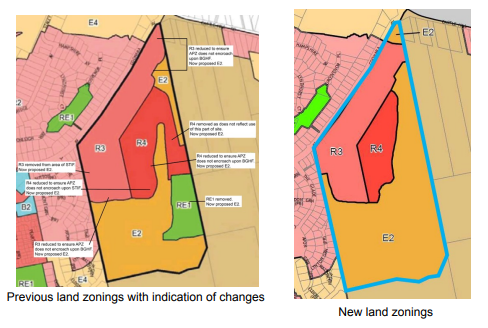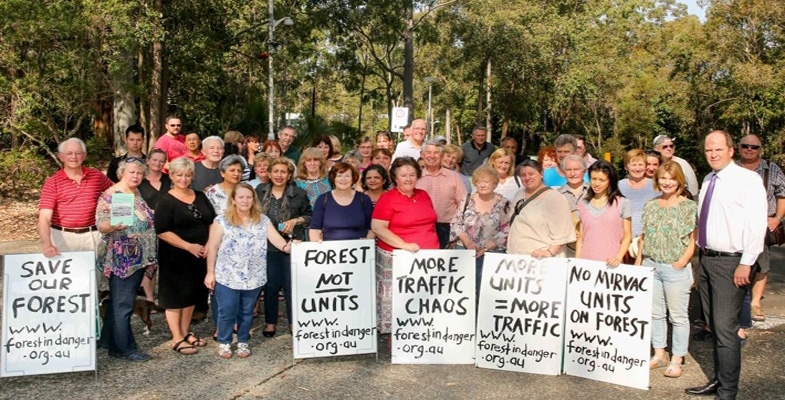As feared by the residents of West Pennant Hills and environment groups the NSW government has ignored the more than 4,000 resident and local council objections to Mirvac’s plans for the development of 600 dwellings on the former IBM corporate headquarters next door to the Cumberland State Forest. The plans are on the list of projects to be ‘fast-tracked’ in the interests of creating jobs to speed up recovery after the COVID-19 slowdown. A short-term gain of employment will result in the long-term destruction of beautiful, tall mature forest and the creation of more traffic jams and infrastructure shortfalls. The site could have been retained for commercial or education uses and provided many more jobs for the local area.
The approval applies to the rezoning required from that of a business park in order for the development to proceed. Some modifications have been made to the plans that were described in STEP Matters, Issue 201.
There has been some recognition of community concerns and comments by the Environment, Energy and Science Group of the Department of Planning (EES, formerly OEH). Some modifications of the proposal are outlined below. Many questions and concerns still remain in addition to the overall concern about over-development of the Cherrybrook area and the destruction of a large number of mature trees that surround the existing IBM buildings.
- The area of the residential footprint will be reduced and the associated bushfire Asset Protection Zones (APZs) so they do not encroach on the BGHF and STIF critically endangered ecological communities. The proposed APZs would have resulted in the modification of multiple patches of BGHF and STIF totalling approximately 1 hectare. The number of dwellings remains at up to 600 so, no doubt, there will more high rise and less medium density apartments. The tiny 86 m2 terraces remain.
- A 100 m buffer distance from residential buildings is required near nest trees in accordance with guidelines for conserving Powerful Owl habitat.
- EES has commented on the need for prohibition of free-ranging cats in the development and that dogs would need to be under control at all times but especially near bushland areas. This would require fencing critically endangered ecological communities. How can these requirements be enforced? We have generally observed that dog owners let their dogs off the leash as soon as they think no one is looking or they feign ignorance of the requirement. Will fencing inhibit the normal movement of native species for foraging and nesting? This suggestion requires a lot more investigation!
- The area zoned as E2, environmental conservation, will increase to 15 ha because of the change in the residential footprint and removal of the recreation zone. It is proposed that 9 ha of the E2 zone be managed by Forestry NSW as part of Cumberland State Forest. Will the funding be increased for management of this area?
- The public recreation area, that was to be zoned as RE1 with a synthetic turf soccer field and lighting, has been removed in recognition of the impact the lighting and noise would have had on the Powerful Owls nesting and foraging needs. It will then be part of the E2 zone and this area, currently mostly mown grass, will be rehabilitated and revegetated with local native species. This area may include a kiosk or café with a maximum area of 50 m2.
- The other E2 zone in the north that currently includes a car park could include a private recreation facility under community title subdivision, possibly indoors, subject to council consent. The public recreation facilities that were to be funded by Mirvac have gone.
- EES recommended the existing pathways/walking trails be closed and revegetated and the number of pathways/walking trails within the ‘bushland edge’ and close to the Powerful Owl nesting sites are minimised. Further, EES recommended the new pathways/walking trails be located outside the bushland reserve and constructed of appropriate materials to minimise impacts on biodiversity. It is noted the walking trails are in the forested areas proposed to be dedicated to Forestry NSW and will be subject to a future plan of management.
- Introduce a local design excellence provision for the residential areas. So what was the quality of the design going to be before?

What happens next?
The change in zoning has been forced through via this fast tracking process but the detailed layout and design of the residential buildings as well as other details of the land management still has to be approved by Hills Council. There will still be opportunities to make submissions on the next stage of the planning process. No doubt there will be a great deal of community interest.

